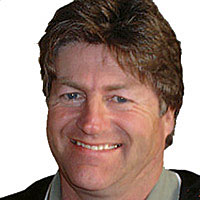1st Tee
Golf Not On Life Support - Yet
- Details
- Category: 1st Tee
- Published: 2015-12-24
by Bryan Outram - There has been talk for some time now about the trouble that golf is facing with regard to its growth and participation.

Programs such as BC Golf’s ‘Playground To Fairway’ School Golf program or the National Golf in Schools program represent just a couple of the many attempts made around the country to get youngsters introduced to the game in the hopes that it will help stem the decline in numbers of those participating in golf, either because they are leaving the game or just plain never took it up in the first place.
The issue of ”growing" the game seems to be a part of nearly every golf-industry conversation these days, and it has as many different viewpoints from both positive and not-so positive directions as you would imagine.
There are those who pooh-pooh all this “grow the game” talk, of course, and those behind golf's movement to change with the times must still try to convince old-school types that continue to prefer golf the old-fashioned way, that being: difficult, stuffy and exclusive.
Take for instance this post on the geoffshackelford.com site from last summer: ‘Is anyone else tired of this "growing the game" issue? It seems like some drag this out too often. I prefer a better game played by fewer to a dumbed-down game played by more.’
The comment was in response to a Lorne Rubenstein piece on whether anchoring is a stroke in golf, which stated in part, “This seems to me to be an argument about that cloudy and also dreamy subject of “growing the game.” That’s the new buzz phrase in golf. The PGA of America and Golf Canada, to cite two national organizations, are always going on about “growing the game,” and if that means changing the game, or at least one important aspect of it, so be it.”
Meanwhile, symposiums have been held to examine what is wrong with how golf is being run or what can be done to bring more people into the game or at least keep them from leaving it. Reasons cited include that it takes too long to play, costs too much, is too hard and that many of the ‘traditions’ of the game are too stodgy and actually turn off many newcomers and youngsters.
There is certainly evidence that a lot of golf courses are paying attention to those concerns or are at least listening to them. Recently Troon Golf, headquartered in Scottsdale, Ariz., and the world's largest golf management company, put out this update on their new dress code:
Attire - Socially accepted golf shirts are appreciated, but your comfort is most important. The nicer you look, the better you will play, so goes the rumour. Shorts can be just about any style, but please do try to present them at a length that everyone wants to look at and remember that gym shorts are for the gym.
Footwear - Footwear is encouraged on the course for reasons of safety and should be of a type and style that will not damage the putting greens. On that note, no high heels, boots or the like please.
Stated Ryan Walls, Troon Golf’s Senior Vice President of Operations, "It is important that our facilities adapt with golfers' preferences by updating dress guidelines to ensure they always feel accepted and comfortable every time they visit. Our code does take a lighter approach," said Walls. "We caught flak over the gym-shorts thing. But let's face it: Ninety-nine-point-nine percent of people will wear appropriate attire. We can deal with the others on a one-off basis."
In his column a while back about the plight facing the golf industry in its efforts to continue to grow the game, Golf Digest contributing writer Bob Carney pointed out that TaylorMade CEO Mark King had suggested that golf’s ‘purists’ were driving the game into a dreary oblivion.
King’s views were somewhat supported by the numbers offered from Adams Golf founder and ex-CEO Barney Adams whose commissioned study last year stated that participation in golf could indeed drop "40 to 60 percent" in the next 30 years.
And he said he doesn't buy that golf's slide is the result of tight family budgets in a tough economy. "Too expensive is a cop-out," Adams said. "Value is the issue. In 2000 we had 30 million golfers; now we have 25.7 million. So they tried it — and they rejected the game. It's a product-rejection issue, not an economic issue. How much would you pay for a bad movie? Golf's become a bad movie."
Of course Adams took a lot of heat for making the ‘bad-movie’ analogy, to wit this response from U.S. National Golf Foundation president and CEO Joe Beditz, “The idea that golf could lose half its base is nonsense," he said. "We're slowly recovering. We've just experienced the worst recession in history. Of course we've been negatively affected ... like every other industry has been. But we're not going off a cliff. There are not a bunch of golfer-lemmings ready to jump."
And then Beditz added perhaps the most simple, yet enlightening, statement made yet by someone within the ‘beleaguered’ industry, saying softly, "We're very hard on ourselves."
And how reflective is that of just about every golfer you know?



